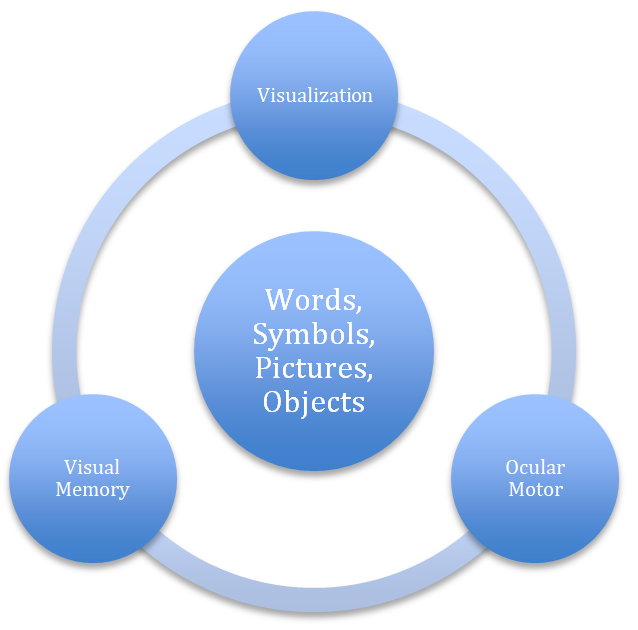As we approach summer, the reprieve from sitting our students in front of a device for a few hours a day is coming to an end. But with hybrid learning and distance learning on the horizon for the upcoming school year, how do we ensure that our students are developing the skills they need while at home, and not physically in front of a teacher every hour of every school day? And is letting them ‘just be kids and explore’ adding or detracting to their overall development?

In order to finally read the word pen however, we rely on our ocular muscles. Ocular motor is the ability to get your eyes across a page, but if it hurts because of something like double vision because this motor skill isn’t completely developed, you’ll avoid this task altogether.
Visual Memory is the ability to recognize the look of words. So you see the word pen, and you know what it looks like in your mind because you recognize the look of it and you know how to say it out loud. Phonics as a back-up strategy is an important tool, but if you are phonetically decoding the same word over and over because you do not ‘load’ the word into your mind’s eye or your visual memory, the flow stops and frustration leads to avoiding the task completely.
The highest cognitive function we can use is visualization. Not everyone is capable of taking the word pen on the page – that you can’t touch and emits no sound – and creating a picture in their mind. Without the understanding of how to convert written text to visual imagery, how could you use any comprehension skills and why would you want to read?
There are many times in our traditional school settings where the above steps are missed because the initial development of skills does not happen. And there could be many reasons why these skills do not naturally develop, including not allowing our students the room to grow.
This natural process does not occur at the same time or in the same order across all students. One of the biggest problems we have in American education is that we push academics lower and lower in the curriculum and simply don’t recognize and adapt to when a student is actually ready for that phase of their development. Some European countries do not start teaching reading until the fourth grade. By the sixth grade, those same European students are out-reading American children. Why? Because they wait until their students are developmentally ready for that academic task. You cannot ask a student to read if they cannot get their eyes across the page and/or do not visualize pictures in their mind while reading.
Now that students are at home, have been for months, and could be come September, how do we ensure that these crucial developments are happening? Without a “real” teacher helping to make connections for them face to face, can we rest comfortably knowing that each student is slowly but surely making their way along the path with the skills they need?
While older students are better at doing their assignments independently, elementary aged students may not be at the same advantage. However, since these students are the ones who need time to develop their “prerequisite skills” like ocular motor and phonics, perhaps they are better off spending more time playing than trying to read over Zoom?
I remember when my first born, who is now 20, was about to start kindergarten. They were having an orientation, and when I expressed an interest to attend, my wife, knowing my views, looked at me and said “please don’t go.” I said, “don’t worry, I won’t say anything.” During the course of this orientation, they were talking about all the different centers – the reading center, the math center and the social studies center. These were all great centers but I couldn’t help myself and I had to ask, where is the jump rope center and where do they eat paste? Although the question caught the teachers off guard, it did allow me a makeshift pulpit to discuss my views on the developmental process. I shared that we could make a positive impact on the students and potentially get better results by simply trying something a little different. Insanity right? Needless to say, I did help my district develop a mom and dads’ motor development program that the kids did every day to work on their motor development skills, and it is still in effect all these years later. (Yes, that noise you heard was a little foot stomp, finger snap and a pat on my own back!).
So maybe in these uncertain times, especially with the complexities around reopening schools, parents can rest assured that their children are developing. If they let them play, explore and be creative outside of their device, it may be giving them an advantage over sitting in a classroom all day long. I say for our younger children, take the summer to run, grow, climb trees and develop! Allow for play, and know by doing so they are developing just fine.
For all education needs including deployment services, and solutions for hybrid and distance learning, please reach out to Education@AllCovered.com.